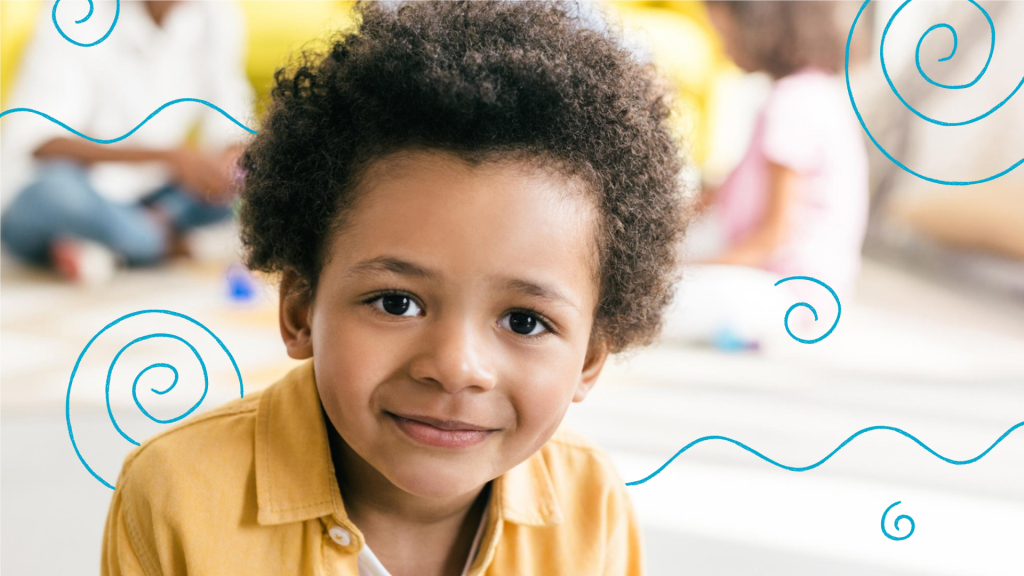
- 3 mins
Big Feels: What’s the Difference between Worry, Fear and Anxiety?

If you’re looking to understand the ins and outs of attachment in kids, then this article is for you. Attachment describes the ‘lasting psychological connectedness between human beings’ (Bowlby, 1997). From the first breath we take, we are wired for connection. This is why it makes sense that the first relationship an infant experiences is with their primary caregiver. Attachment theory describes this emotional bond.
Disruption of this bond or loss of this relationship can, in turn, affect a child emotionally and psychologically into adulthood. It can have an impact on their future relationships. As caregivers, you’ll develop a secure attachment with your child by being attuned to their needs and being as present as possible in their development.
The first two years of a child’s life are critical for forming attachments (Prior & Glaser, 2006). It is during this period that children develop what Bowlby (1997) terms an ‘internal working model.’ This model shapes the way a child views relationships and socially navigates the world. This internal working model can affect their sense of trust in others and sense of self.
Attachment for your child is predictable, loving, responsive and consistent. During moments of stress or exploration, secure attachment behavior typically displays:
Children with secure attachments are more likely to develop emotional intelligence, empathy and compassion, good social skills and robust mental health (Howe, 2011). Alternatively, not receiving comfort and security in these early years can have a negative impact on a child’s neurological, emotional, physiological and psychosocial development. Because of this, children who have attachment issues can have trouble forming healthy adult relationships as they have experienced them being unreliable and untrustworthy (Bowlby, 1997).
Unfortunately, it can sometimes be challenging for caregivers to form a secure attachment with their children. This could be due to circumstances like their own mental health, substance abuse, family stressors, bereavement or loss, abuse and maltreatment. All of these could potentially be obstacles to forming a secure attachment and can be causes of significant attachment trauma.
Children who are securely attached to their caregiver are generally trusting and content. Because of this, they are secure enough to explore the world and test the limits of their independence in a safe environment. Most children fall into this category. In addition, new research has taught us that when primary caregivers respond and are in tune with their infant at least fifty percent of the time, the infant learns security (Woodhouse, et al, 2019).
Children with an anxious and avoidant attachment style can struggle to play with people and tend to prefer objects. They may be emotionally distant, wary of physical contact, and, as a result, often display premature signs of independence.
Children displaying an ambivalent attachment style show high levels of anxiety and insecurity. They may frequently seek the attention of their caregiver and seem clingy. On the other hand, at the same time, may reject that attention when offered.
Children with a disorganized attachment style may display anger and erratic behavior. They may seem depressed, withdrawn and unresponsive. A child with a disorganized attachment style has typically been exposed to severe early childhood trauma.
It is important to understand that as they grow and develop, kids can display characteristics of other attachment styles. The types of behaviors in a child that typically has a secure attachment are healthy and normal.
Likewise, it’s also important to recognize that attachment styles are flexible and can be changed (Crittenden, 1995, Fraley, 2018,). This is particularly so through the teenage years and in adulthood, and even more so if you enter into a secure relationship or through therapeutic support. Fostering your child’s self-esteem through a safe, loving, and encouraging relationship can help your child create healthy future relationships.
As an adult, it can be useful to understand your attachment style so that you can develop your self-awareness, tune into your own emotions and behavioral responses and strengthen your relationships with others. If you’re interested, you can take an informal test today.
Attachment trauma is a disruption in this process of bonding between the child and the primary caregiver. Adult relationship challenges can indicate a degree of attachment trauma. It’s important to remember that it’s not about what happens to you but rather about what is happening inside of you. Neurobiological research explains that when the early attachment relationship constantly triggers your nervous system to go into ‘fight, flight, freeze’ mode, it can cause a build-up of cumulative stress in the body. Because of this, your nervous system is consistently learning how to be in connection with others and figuring out whether they are safe in that connection. Feeling constantly unsafe will ultimately lead to attachment difficulties.
There are overt causes of attachment trauma to note. For example, divorce, loss, illness in the family, and domestic violence. Alternatively, there are covert causes of attachment trauma, as well. This is when it includes a caregiver. Examples of this include if they are physically or emotionally unavailable, have mental health difficulties preventing them to meet their child’s basic needs, use psychological controlling tactics or are controlling entirely.
Years of research taught us that attachment styles can change depending on life circumstances. Trauma can play a role in shifting attachment characteristics in adulthood. Fortunately, many aspects of our lives can impact the long-term effects of trauma. For example, having a strong support system, existing coping skills, and access to therapy can be just as impactful as attachment style in the recovery of a traumatic event.
If a child has experienced a secure attachment but unfortunately goes on to experience a traumatic event, they will turn to their internal working models as coping mechanisms. Above all, secure attachments can help mitigate the long-term impact of trauma. This is typically because the secure child will seek to lean on the security of their attachment figures, their positive internal working models and their effective coping mechanisms, in a space that feels safe for them.
In conclusion, years of research have helped us understand that attachment styles in kids can change depending on life circumstances. Trauma can play a role in shifting attachment characteristics in adulthood.
Bowlby, J. (1997). Attachment and Loss. Volume 1: Attachment. London: Pimlico
Ainsworth, M,D,S., & Bell, S,M. (1970). Attachment, exploration and separation: Illustrated by the behaviour of one-year olds in strange situation. Child Development 41(1): 49-67. doi: 10.2307/1127388.
Ainsworth, M,D,S., Blehar, M,C., Waters E., & Wall S. (1978). Patterns of Attachment: A Psychological Study of the Strange Situation. England:Lawrence Erlbaum.
Music, G (2010) Nurturing Natures: Attachment and Children’s Emotional, Sociocultural and Brain Development. Psychology Press
Schore, A,N. (2001). Effects of a secure attachment relationship on right brain development, affect regulation, and infant mental health. Infant Mental Health Journal, 22(1-2), 7-66. doi: 10.1002/1097-0355(200101/04)22:1.
Howe, D. (2011) Attachment across the lifecourse: a brief introduction. Basingstoke: Palgrave Macmillan.
Prior, V. & Glaser, D. (2006) UNderstanding attachment and attachment disorders: theory, evidence and practice. London: Jessica Kingsley.
Woodhouse, S,S., Scott, J.R., Hepworth, A.D. & Cassidy, J. (2019) Secure Base Provision: A New Approach to Examining Links Between Maternal Caregiving and Infant Attachment. Child Development. DOI: 10.1111/cdev.13224
https://learning.nspcc.org.uk/child-health-development/attachment-early-years#article-top
https://psychcentral.com/health/attachment-trauma#how-do-you-know-youre-healing
https://mytherapynyc.com/trauma-attachment-relationships/
http://labs.psychology.illinois.edu/~rcfraley/attachment.htm (Fraley, 2018)
https://familyrelationsinstitute.org/dmm-model/ (Crittenden, 1995)